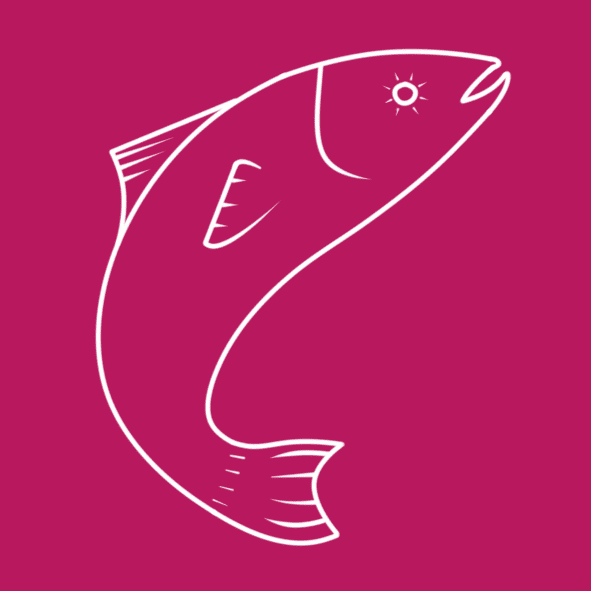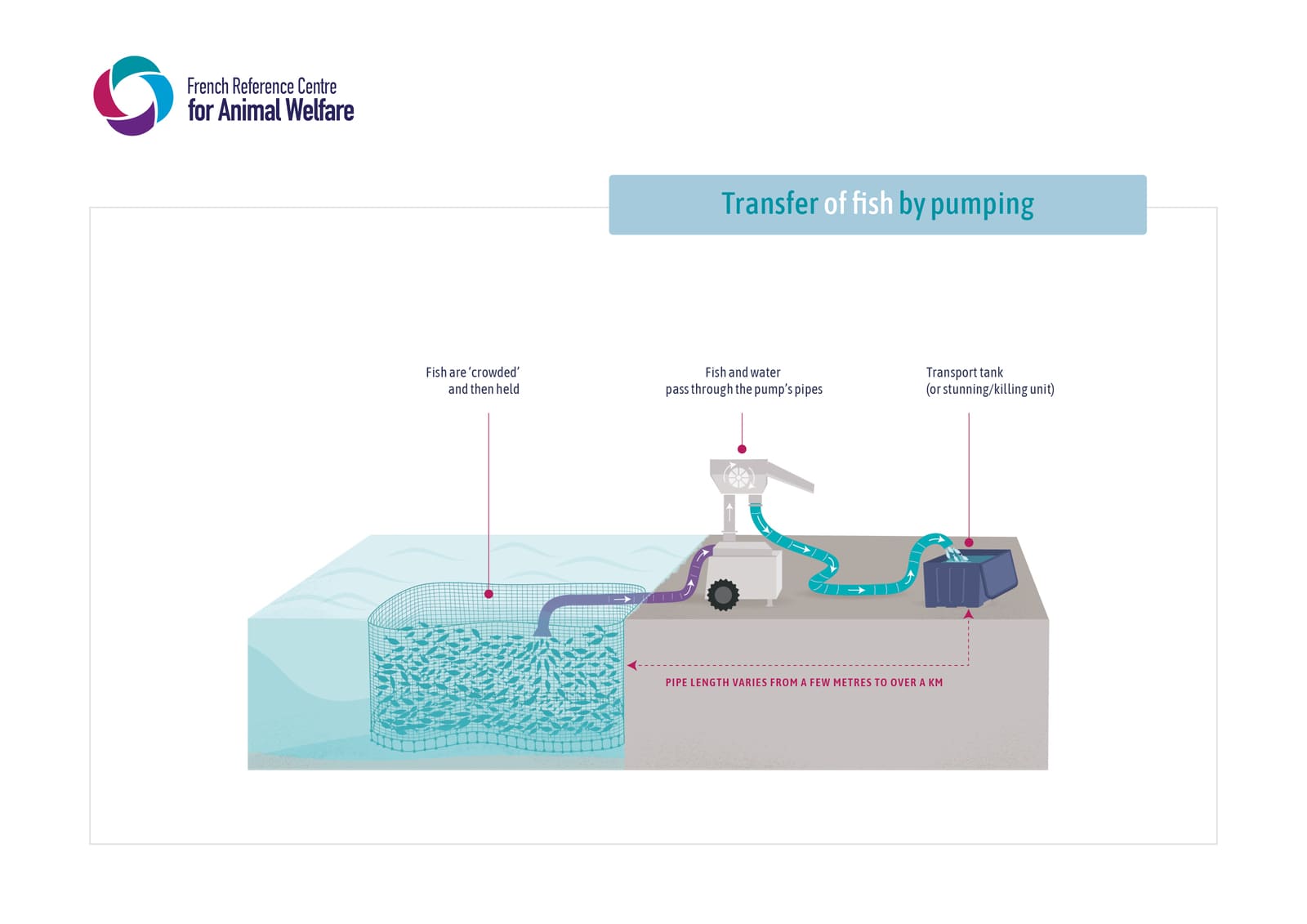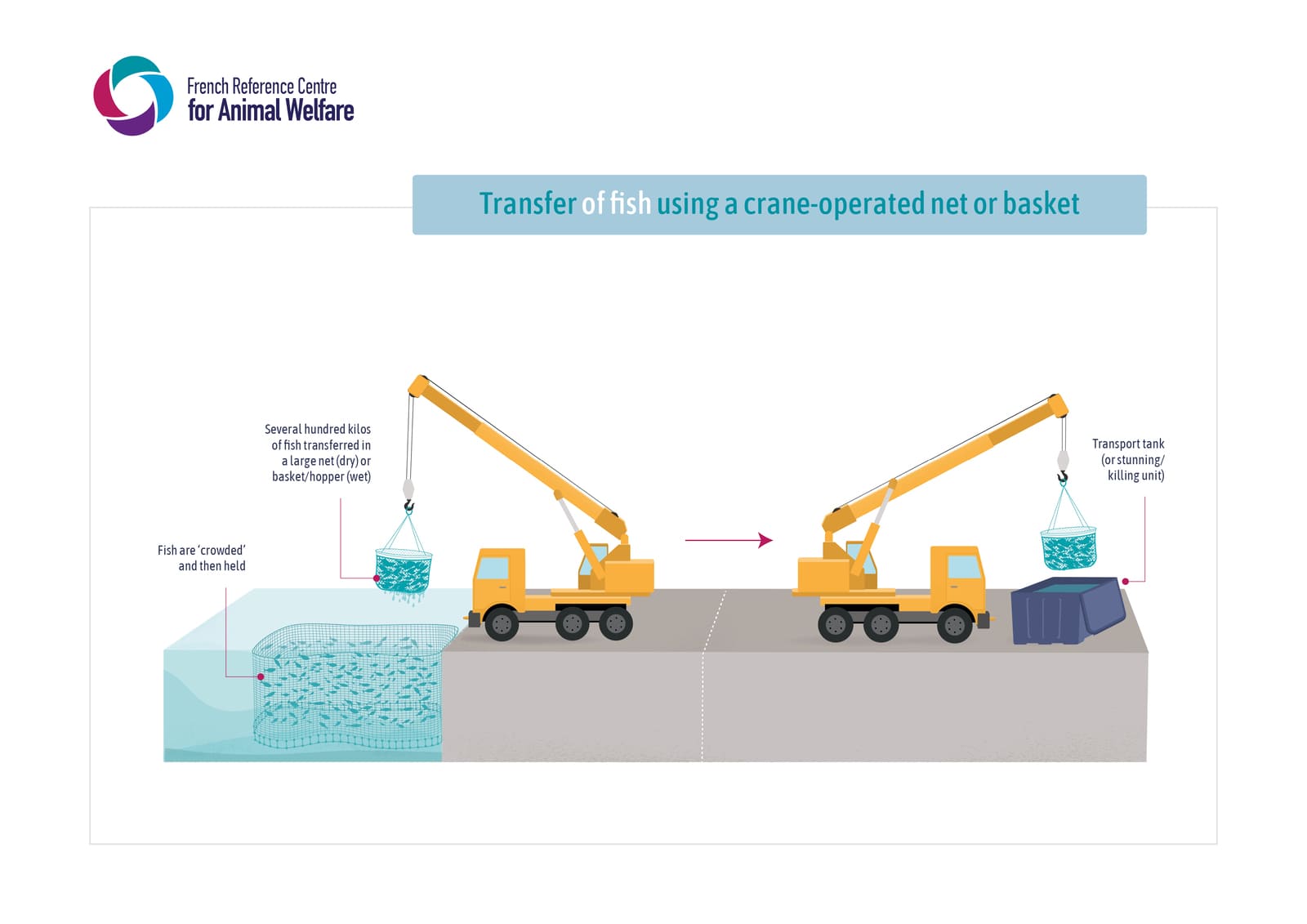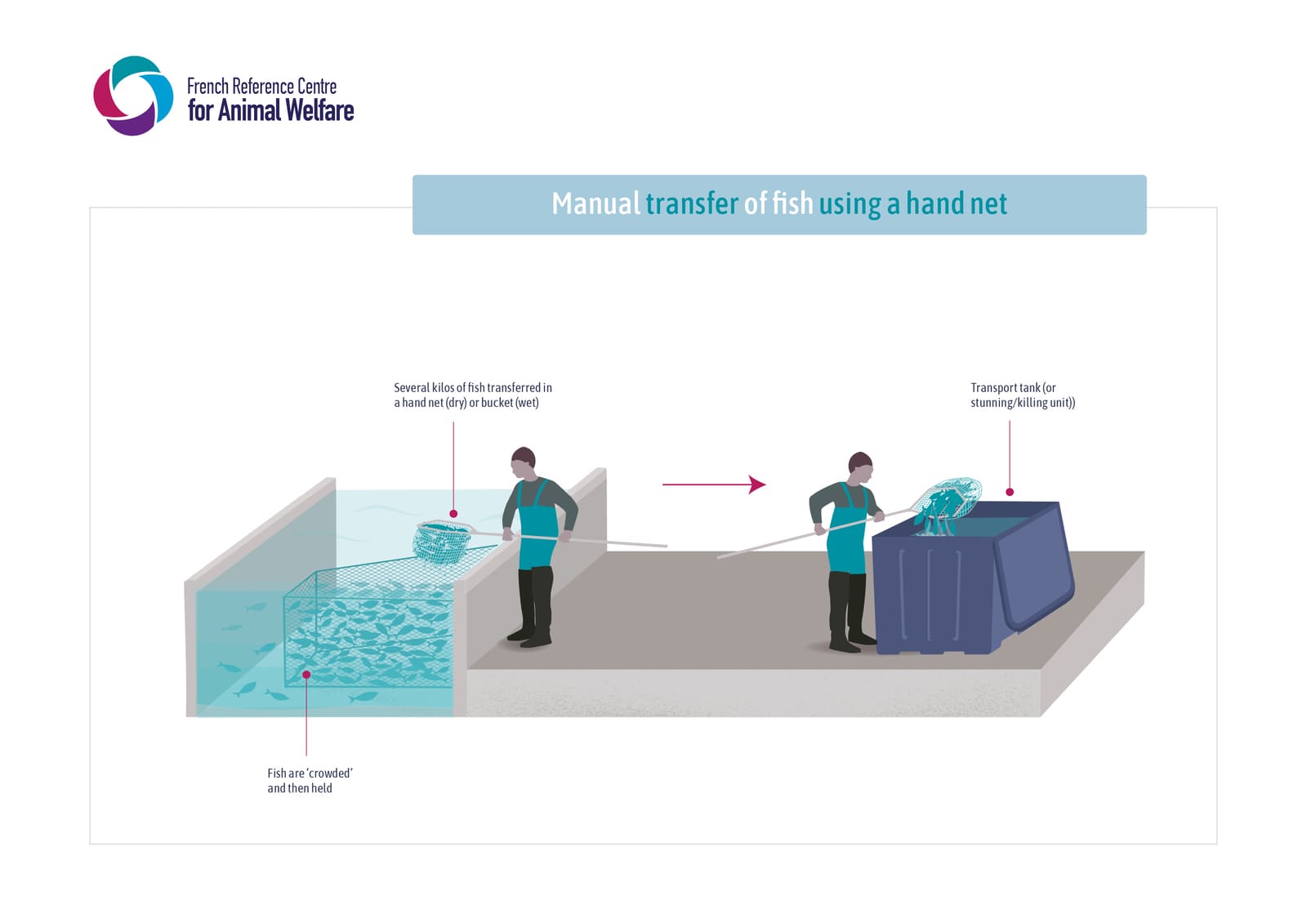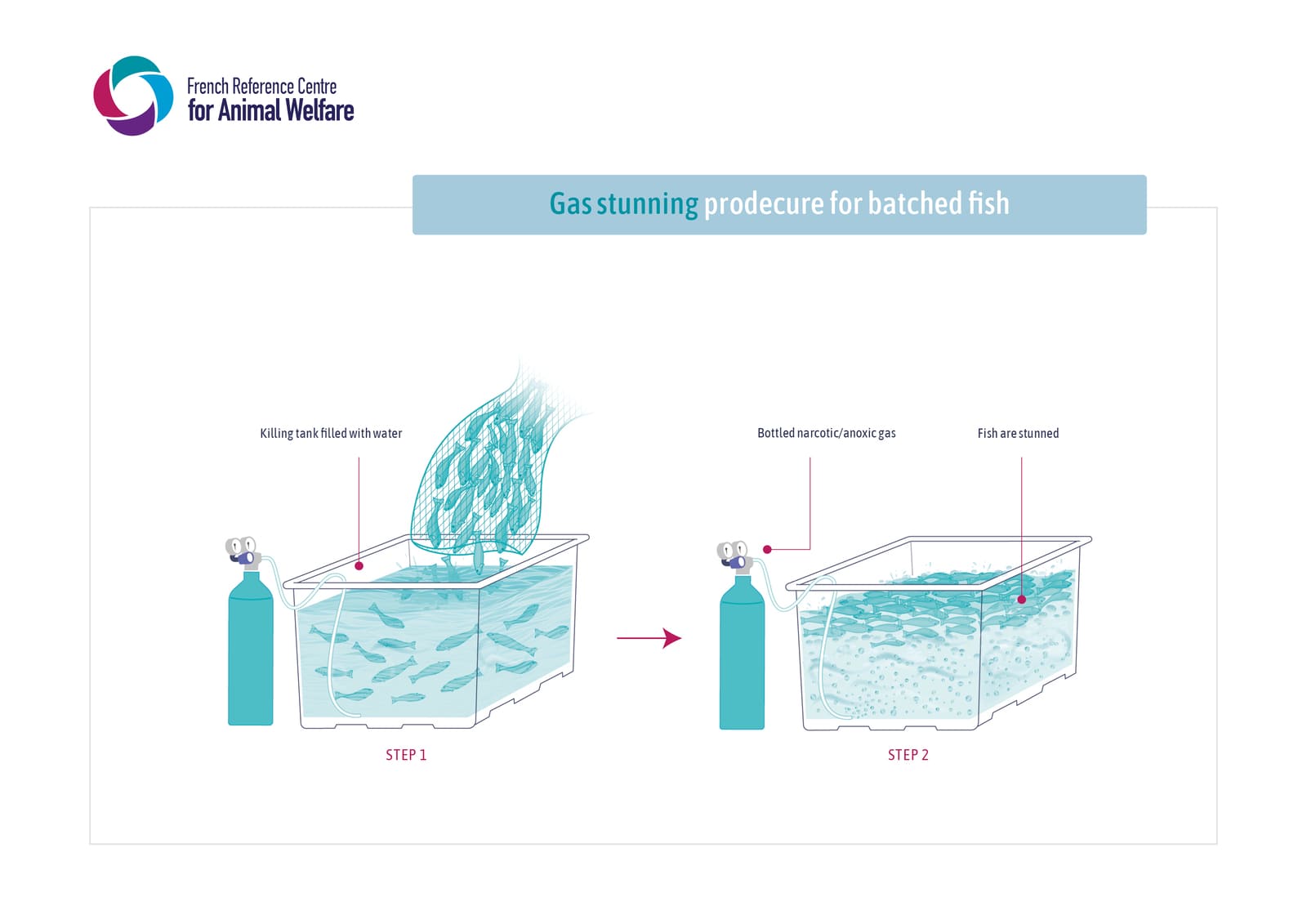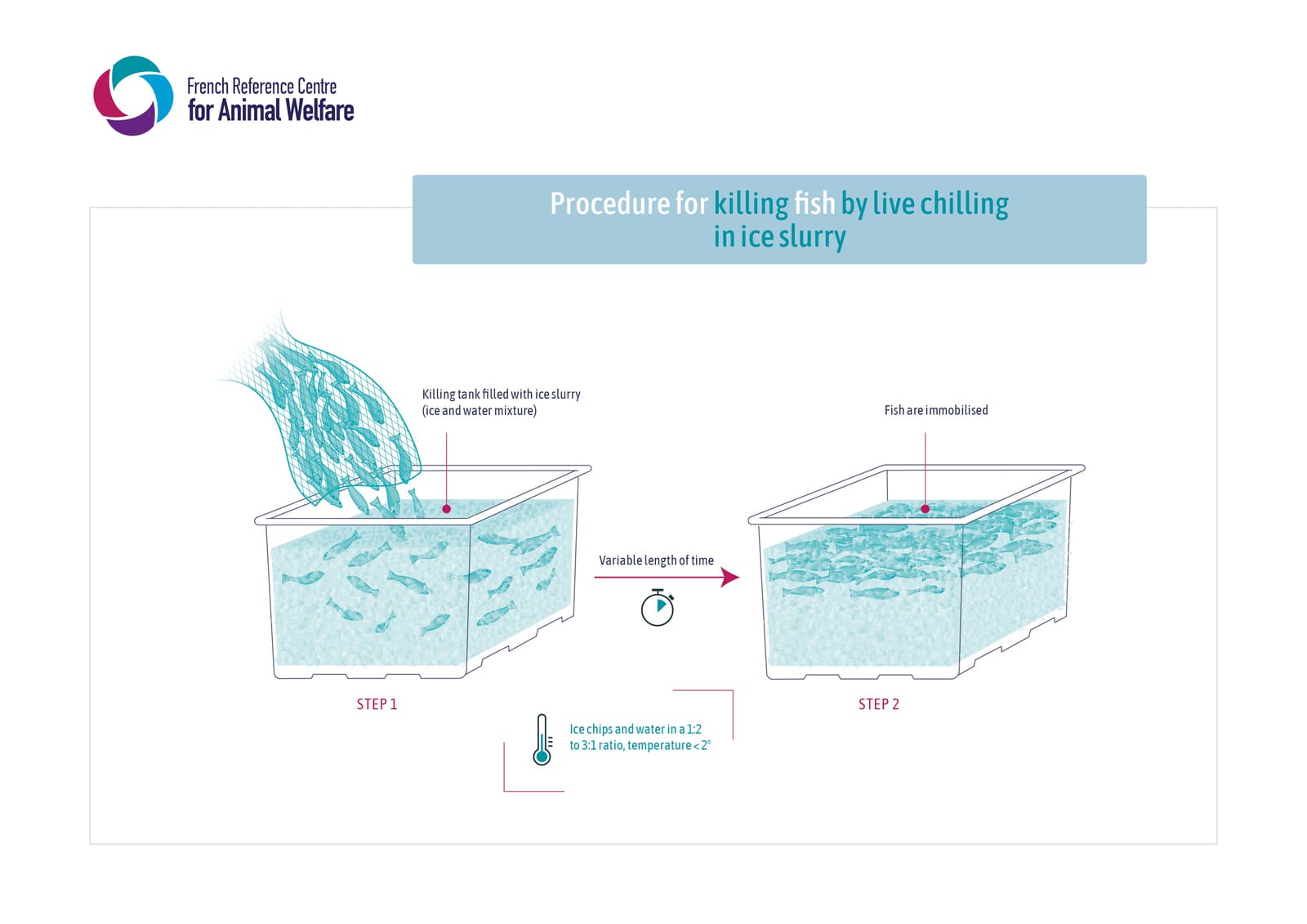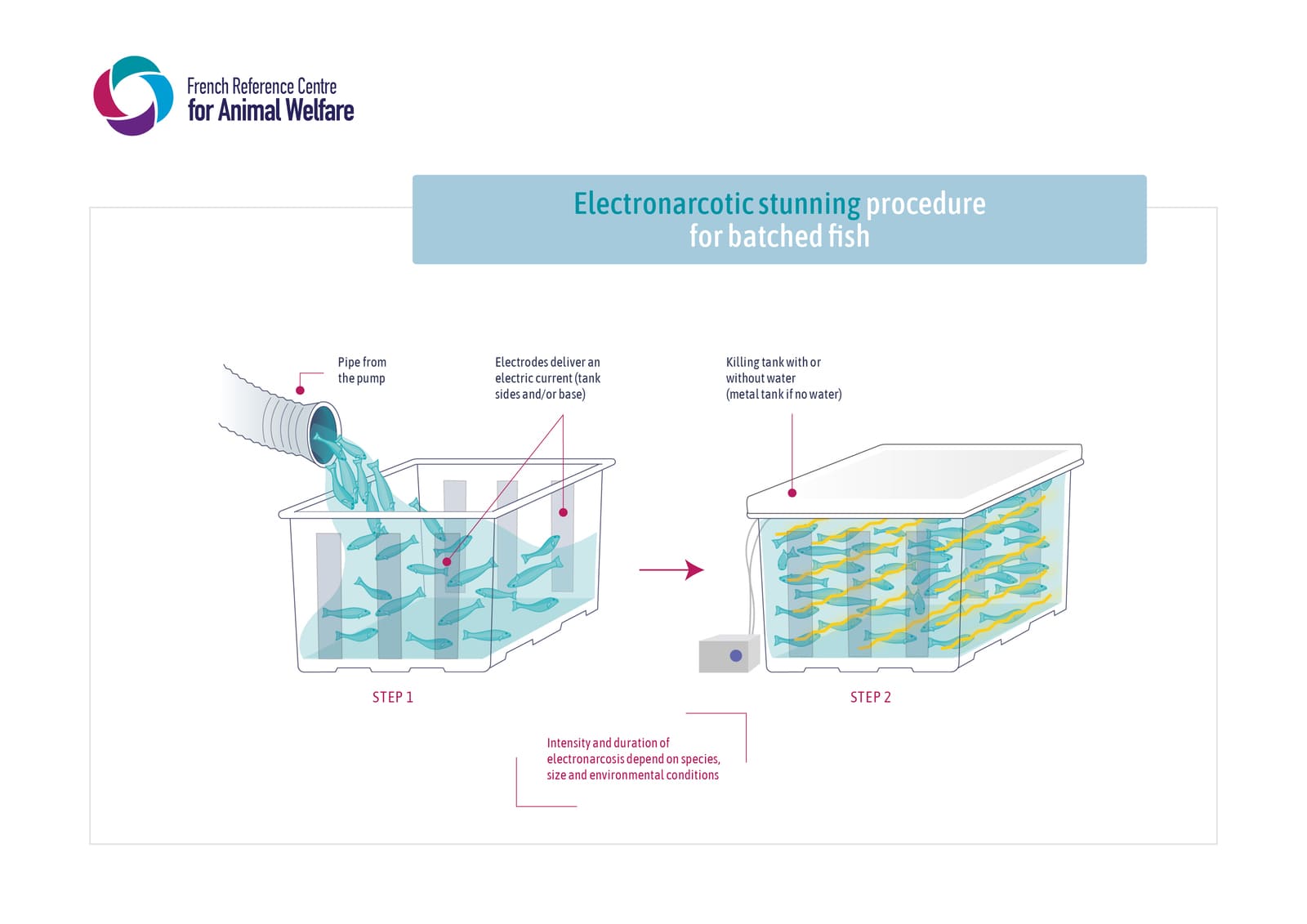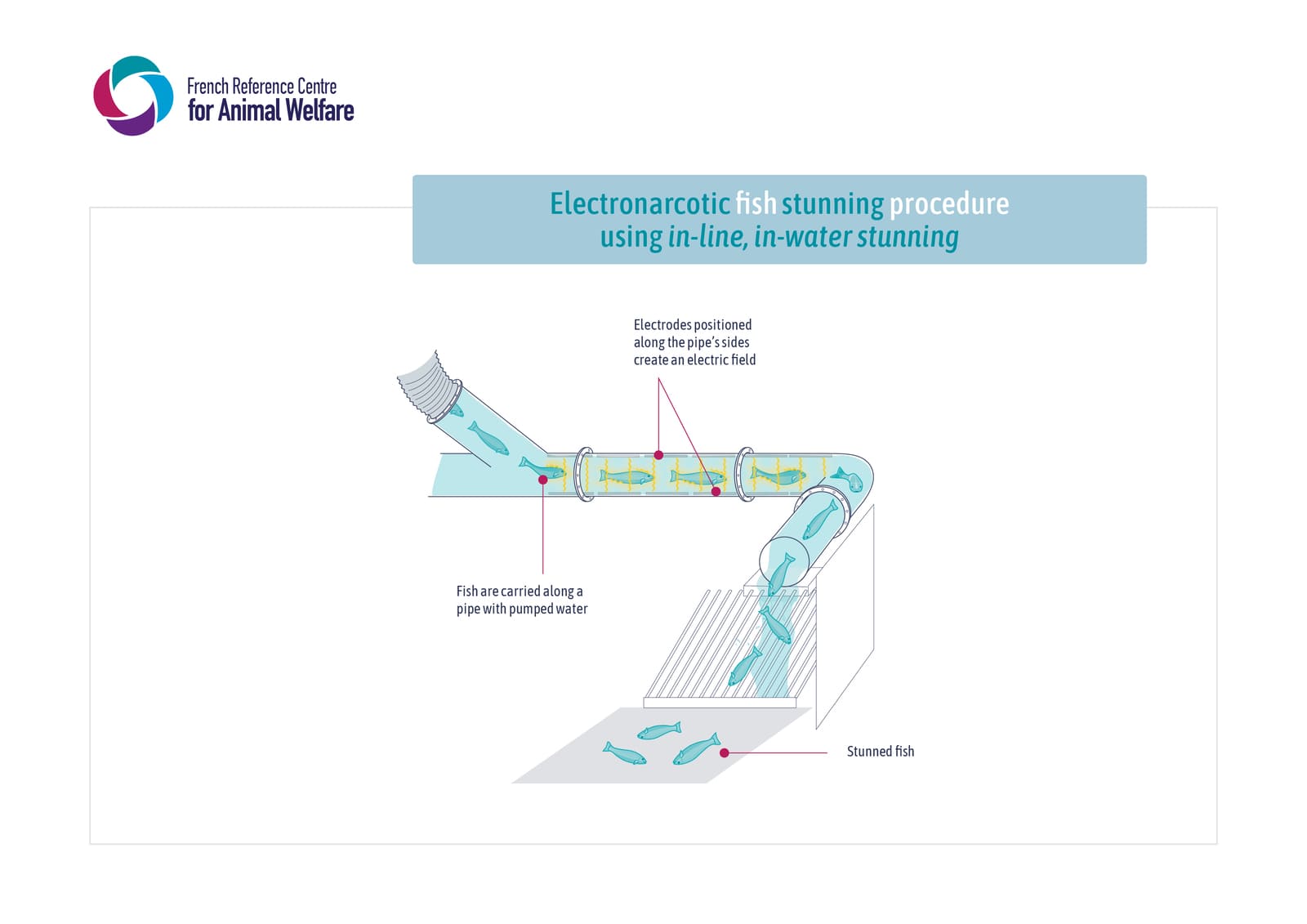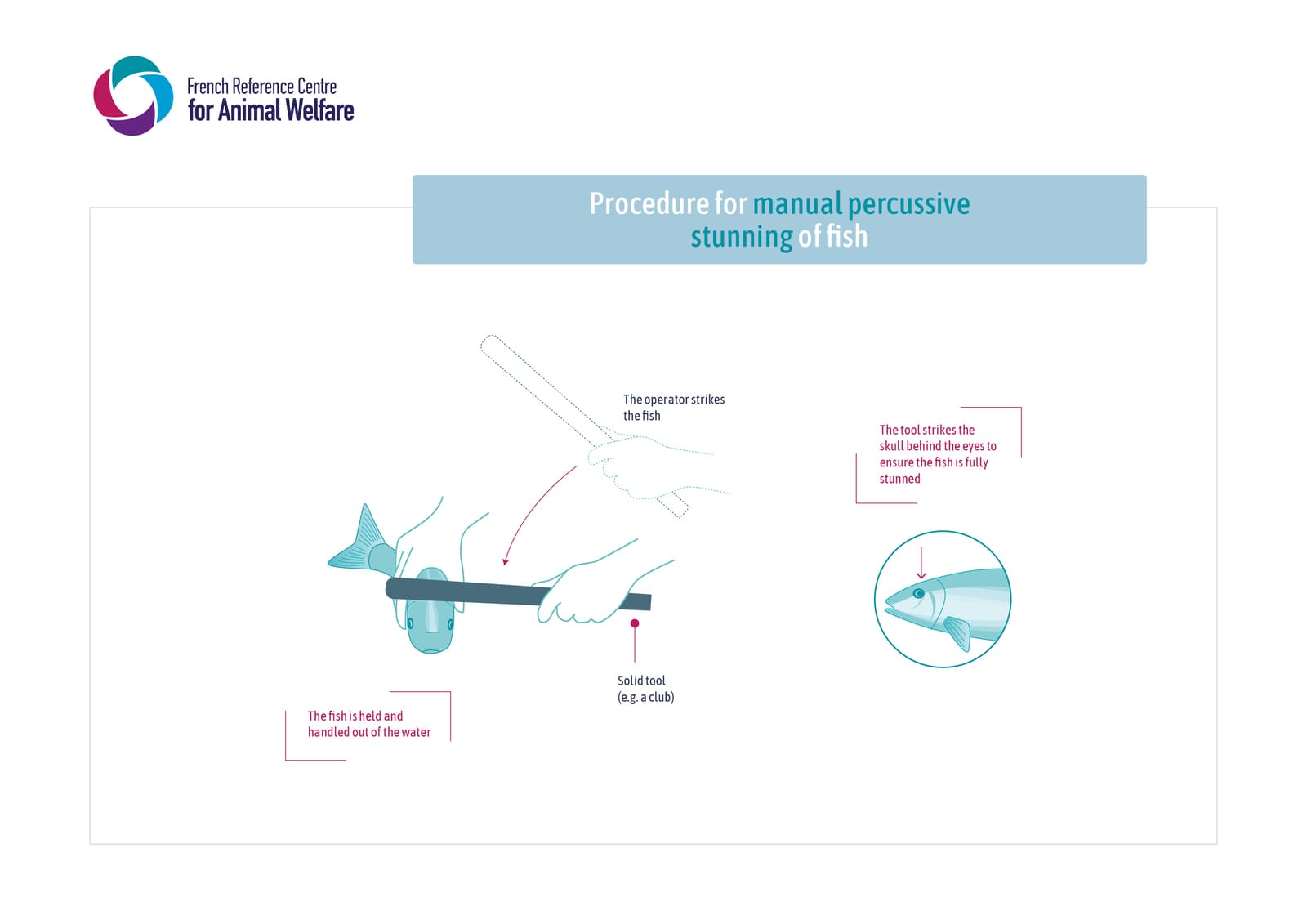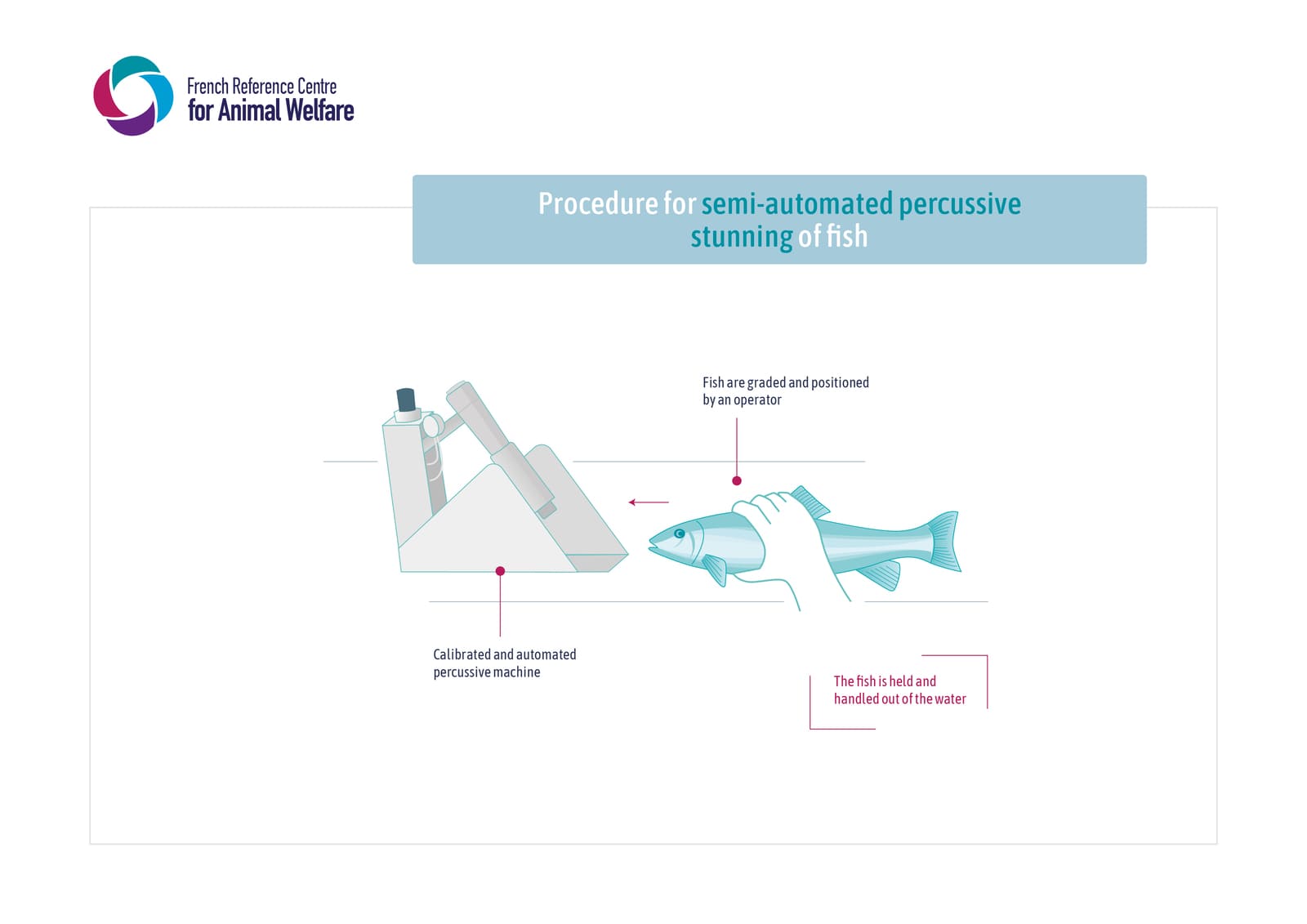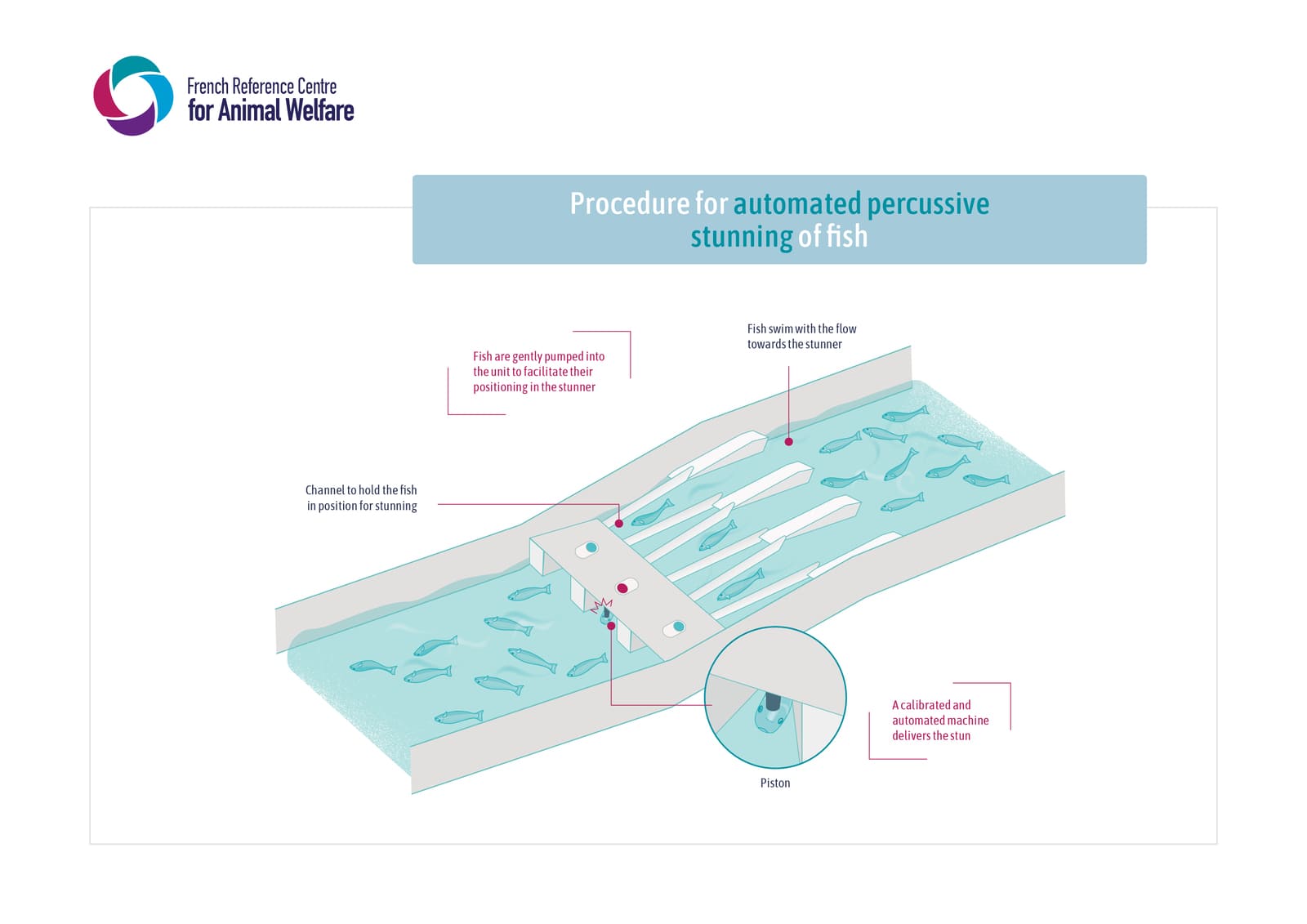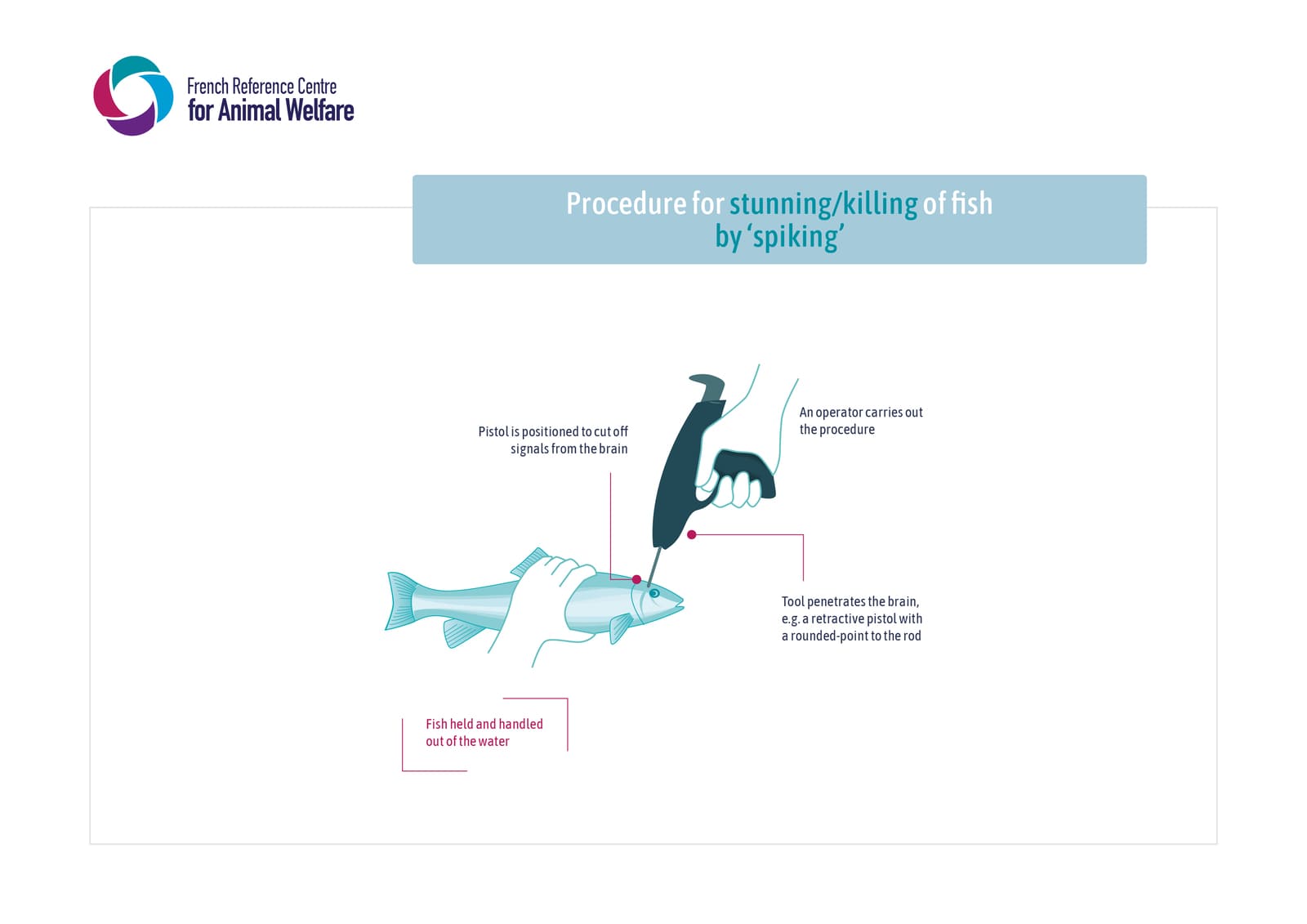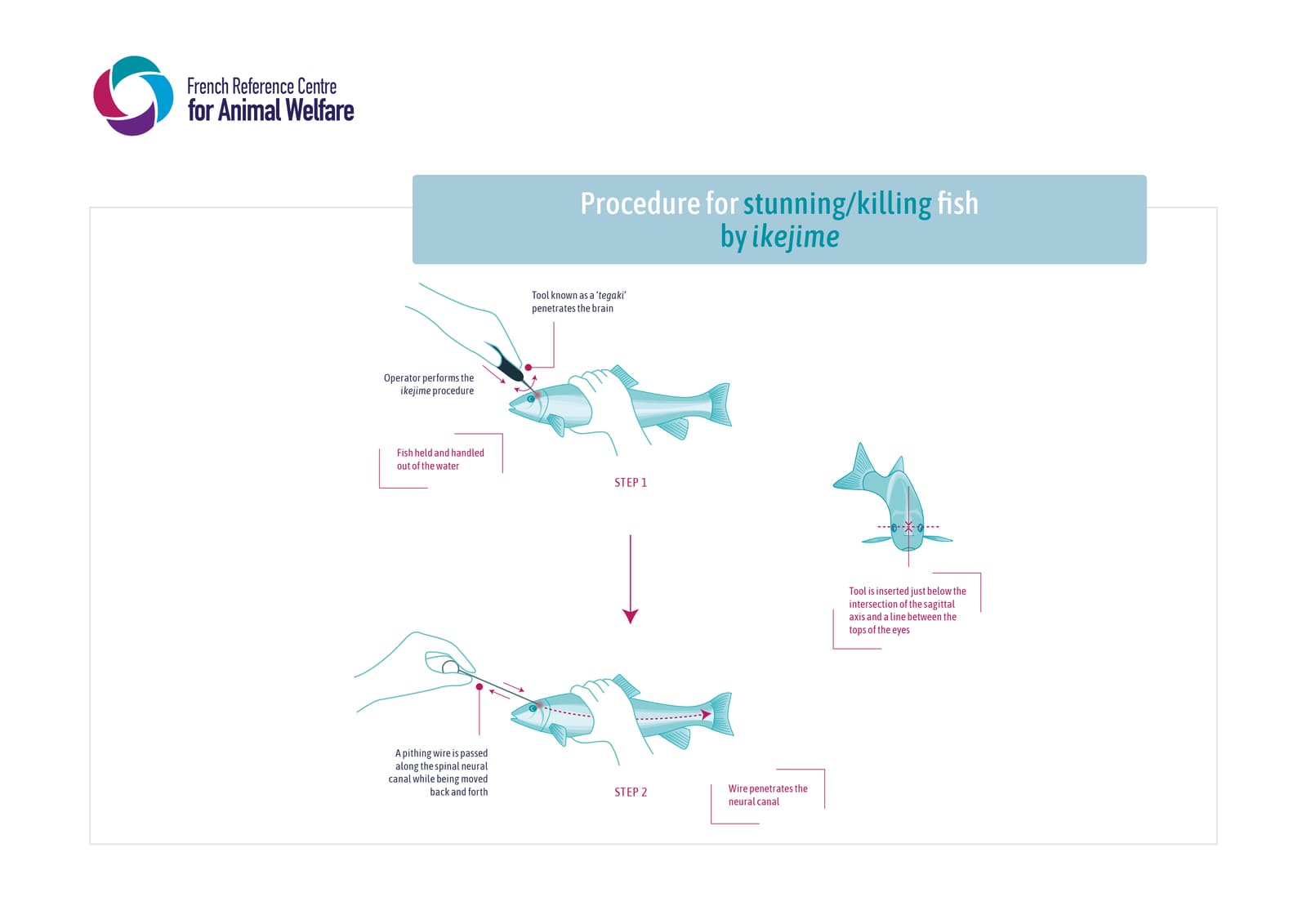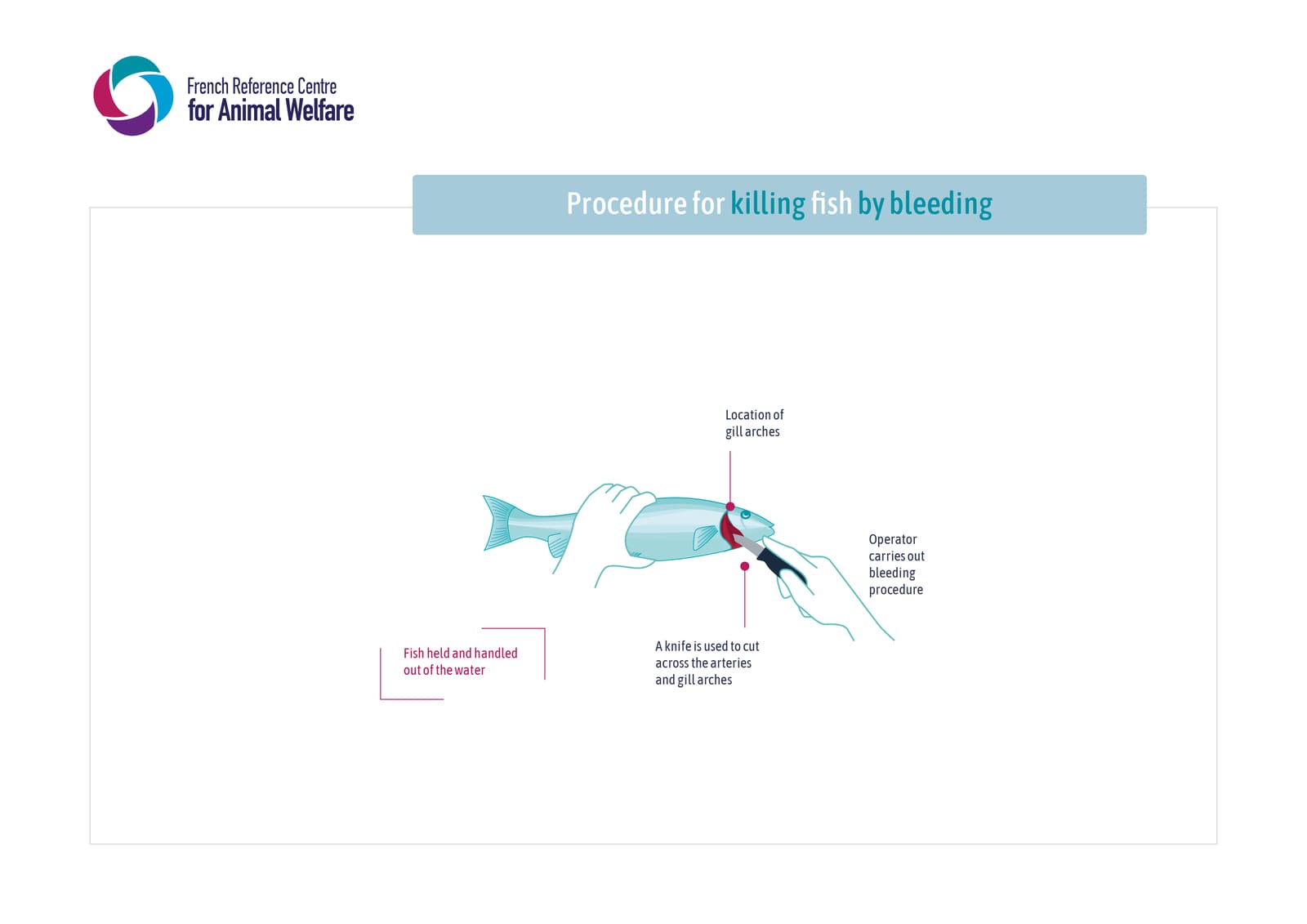Full title: Opinion of the FRCAW on slaughter conditions for farmed fish
Requested by: French Reference Centre for Animal Welfare (FRCAW)
Delivery date: 03/2024
DOI: 10.17180/71sz-g249
Context
At the first meeting of the fish welfare platform set up by the French Inter-professional Committee on Aquaculture Products (Comité Interprofessionnel des Produits de l'Aquaculture, CIPA), a need was identified for scientific information on fish welfare during slaughter, particularly in connection to stunning. To meet this need, the FRCAW, in agreement with CIPA, proposed a literature review.
Much work is already available on stunning and slaughter conditions for the various species of fish farmed in Europe. However, no literature review exists that specifically addresses the situation in France. Moreover, the pre-stunning phase is generally not dealt with in detail, despite its impact in terms of animal welfare. This document therefore aims to identify:
- the factors likely to compromise the welfare of fish in the French fish farming sector from the time they leave the rearing pond or tank to their death;
- the causes of these factors;
- the stages involved in the process, i.e., pre-stunning, stunning, killing, etc.;
- the impacts on animal welfare of the factors identified;
- methods to measure these impacts;
- preventive/corrective actions to limit negative outcomes for fish welfare.
Main conclusions and recommendations of the FRCAW
Only the main stunning and slaughtering practices studied in the literature are referred to in this summary. Table 11 of the opinion provides a summary of the practices studied in this report, listing their advantages and disadvantages in terms of fish welfare. Although fish welfare is the focus of the analysis of stunning and killing methods set out in this document, certain advantages and disadvantages from a technical perspective have also been included in Table 11 to provide the context for decisions made on the ground on whether to use or avoid the practices under review. It must be borne in mind that, for all the practices listed in the table below, the major contributory factors in effective stunning and the welfare of fish during slaughter are the correct training of the operating team, the use of suitable equipment that is properly calibrated and maintained, the ability to recognise when a fish has been effectively or poorly stunned, and the availability of emergency equipment.
Taking into account the findings of this review and the expert opinions expressed on the subject, the expert committee has formulated the following recommendations:
Recommendation 1: The stunning and killing practices, protocols and equipment employed in France should be more thoroughly inventoried and their respective impacts on the different species of fish concerned should be assessed. This could be achieved through surveys and interviews of equipment manufacturers or other professionals in the sector, coupled with observations on the ground.
Recommendation 2: Technical guides and/or protocols should be drawn up by the industry, in partnership with technical institutes and research bodies. These guides should be based on scientific and technical studies using non-stressed controls to assess the effects of different practices on fish and to identify optimal stunning parameters. These guides should be reviewed and validated by scientific experts in fish physiology and behaviour.
Recommendation 3: Among the many research projects needed to improve fish welfare in the context of slaughter, more research effort should be invested in particular in:
- the study of alternative methods to the use of a water/ice mixture for killing without any other form of prior stunning;
- the study of the impact of fasting on fish behaviour to complement current studies on the welfare of fish during this stage of production;
- the verification of the effects of stress on product quality.
Recommendation 4: Reliable indicators of stress and unconsciousness should be sought and studied for each species in the context of slaughter to determine their feasibility, repeatability and reproducibility in practice. In particular, specific behavioural indicators should be studied in greater detail to analyse the impact of different practices on fish.
Recommendation 5: The legal framework for the protection of fish, particularly around the time of slaughter, should be developed and clarified through the new European regulations on animal welfare in the light of recent scientific knowledge.
Recommendation 6: To inform its regulatory review of fish welfare, the European Commission should formally request an assessment from EFSA of the risks to fish welfare in the context of slaughter for all species farmed in Europe.
Recommendation 7: The differences in sensitivities between fish species and sizes should be studied further, so that practices can be adapted to suit the needs of the individual fish sold commercially.
Recommendation 8: The handling of fish out of water should be limited to what is strictly necessary and ‘dry’ practices should not be used on non-stunned fish. The duration of the fast imposed on fish before they are killed should be adapted to the species and the water temperature to which a fish has been accustomed.
Recommendation 9: It is essential to take individual variability into account when managing batches of fish. Control testing should be carried out on sufficiently large samples of individuals representative of the batch to ensure the effectiveness of stunning methods.

